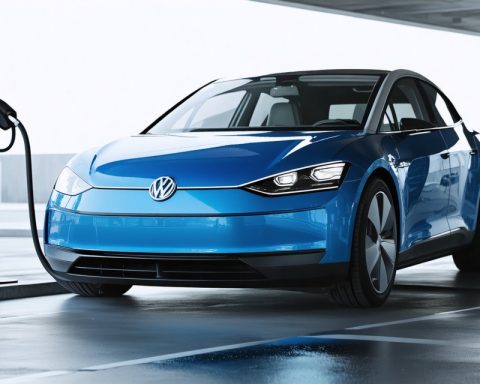- A group of 14 Republican senators is pushing new legislation that could disrupt the growth of the electric vehicle (EV) market, emphasizing political concerns over federal support for EVs.
- Senator John Barrasso’s Eliminating Lavish Incentives to Electric Vehicles Act aims to cut the $7,500 tax incentive for new EVs and remove benefits for used EVs, framing them as elite luxuries.
- The Fair SHARE Act, proposed by Senators Deb Fischer, Pete Ricketts, and Cynthia Lummis, suggests a $1,000 fee on EVs to contribute fairly to road maintenance, citing their potential under-contribution to the Highway Trust Fund.
- Skepticism arises from the influence of the oil and gas industry, significant donors to some of these senators, indicating a broader intersection of politics and industry interests.
- The legislative developments could significantly impact the future trajectory of transportation and EV adoption in the United States.
The winds of political change are swirling ominously around the electric vehicle (EV) landscape. Like a storm on the horizon, a series of legislative maneuvers threatens to upend the nascent EV revolution. Spearheading this charge is a group of 14 Republican senators, introducing two bills that shake the foundations of federal support for these green machines.
In the heart of this political maneuvering, Senator John Barrasso of Wyoming hopes to dismantle the financial frameworks enabling EV adoption. His legislation, the ominously titled Eliminating Lavish Incentives to Electric Vehicles Act, targets essential tax credits that have fueled the EV market’s growth. If successful, the bill would eradicate the $7,500 incentive for new EV purchases and eliminate benefits for used models, painting these cars as luxuries for elites, unworthy of taxpayer support.
Another legislative cyclone is brewing, driven by Senators Deb Fischer, Pete Ricketts, and Cynthia Lummis. Their Fair SHARE Act introduces a controversial $1,000 fee on EVs, claiming fairness in maintenance costs for roads and bridges. As EVs roll silently over highways, critics argue they’re sidestepping contributions to the Highway Trust Fund, traditionally bolstered by gas taxes.
Amidst this legislative turbulence, whispers linger about the influence of the oil and gas industry, a notable contributor to Senator Barrasso and Fischer’s campaign coffers, fueling skepticism about the motivations behind these bills.
In this unfolding drama, the takeaway is clear: the bid to reshape EV incentives reveals a complex intersection of politics, industry interests, and the future of transportation. As America navigates this electrified crossroads, the outcome may redefine the nation’s roadways for decades to come.
Is the EV Revolution Under Threat? Understanding the Legislative Moves Shaping the Future of Electric Vehicles
The Political Landscape and Its Impact on Electric Vehicles
The recent moves by a group of Republican senators to introduce legislation challenging federal support for electric vehicles (EVs) highlight a significant juncture in the path towards sustainable transportation. As these bills gain traction, it’s crucial to understand their potential impact, explore practical implications, and examine broader industry trends.
Key Features of the Proposed Legislation
1. Eliminating Lavish Incentives to Electric Vehicles Act:
– This bill proposes the removal of the $7,500 federal tax credit for new EV purchases, a critical incentive that bolsters EV sales.
– Additionally, it seeks to strip away tax benefits for used EV models.
– The act positions EVs as luxury items, questioning their eligibility for taxpayer-funded incentives.
2. Fair SHARE Act:
– Proposes a $1,000 fee on electric vehicles to compensate for perceived fair share contributions to road maintenance, traditionally funded by gas taxes.
– This aims to address infrastructure funding gaps as EVs become more prevalent.
How-To Steps & Life Hacks for Potential EV Buyers
Considering the potential changes in incentives, prospective EV buyers might consider:
– Purchasing Strategy: If the tax credit is crucial for your buying decision, consider accelerating your timeline to potentially leverage existing incentives before any legislative changes.
– Analyzing Long-Term Savings: Calculate potential savings from reduced fuel and maintenance costs of EVs against the loss of upfront purchase incentives.
– Alternative Incentives: Look for state or local incentives that might supplement federal tax credits.
Real-World Use Cases and Industry Trends
Current Market Dynamics:
– Despite potential legislative shifts, the demand for EVs continues to rise, driven by advancements in battery technology, increased vehicle range, and consumer demand for green alternatives.
– Major automakers are investing heavily in EV technology, indicating a long-term commitment to electric mobility.
Industry Forecast:
– The global EV market is expected to grow at a compound annual growth rate (CAGR) of 22% from 2023 to 2030, driven by stricter emission regulations and technological advancements (source: BloombergNEF).
Controversies and Limitations
Critics’ Viewpoints:
– There are concerns that these legislative measures are influenced by the fossil fuel industry, which sees EVs as a threat to oil demand.
– Critics argue that imposing new fees and cutting tax incentives could slow innovation and adoption of cleaner technologies.
Challenges to Overcome:
– Infrastructure development such as charging stations is still lagging, and policy uncertainty can deter investment in this area.
Features, Specs, and Pricing of Current EV Models
Popular Models:
– Tesla Model 3: Known for its impressive range and technology features, priced around $40,000.
– Ford Mustang Mach-E: Combines performance with utility, priced from approximately $43,000.
– Chevy Bolt: Offers affordability, starting at around $26,500 with a competitive range.
Pros & Cons Overview
Pros:
– Lower operating costs over time due to electricity being cheaper than gasoline.
– Environmental benefits through reduced emissions.
– Quiet operation and innovative technological features.
Cons:
– Higher upfront costs, which are currently subsidized by federal and sometimes local tax incentives.
– Limited range compared to traditional vehicles, though this is improving.
– Infrastructure for charging is not yet as widespread as traditional gas stations.
Actionable Recommendations
– Stay Informed: Follow the progress of proposed legislation as it can directly affect the economics of buying an EV.
– Consult Local Resources: Check for state and local incentives which can supplement or replace federal support.
– Plan for Infrastructure Needs: Ensure access to charging stations whether at home or along typical driving routes.
Clickbait Conclusion: Future-Proof Your Green Ride
Given the political dynamics at play, potential EV owners should act wisely and strategically. By assessing incentives, understanding market trends, and planning for infrastructure, you can make informed decisions in this evolving landscape. For updates on automotive trends, visit Autoweek, and for insights on energy policies, see Energy.gov.














